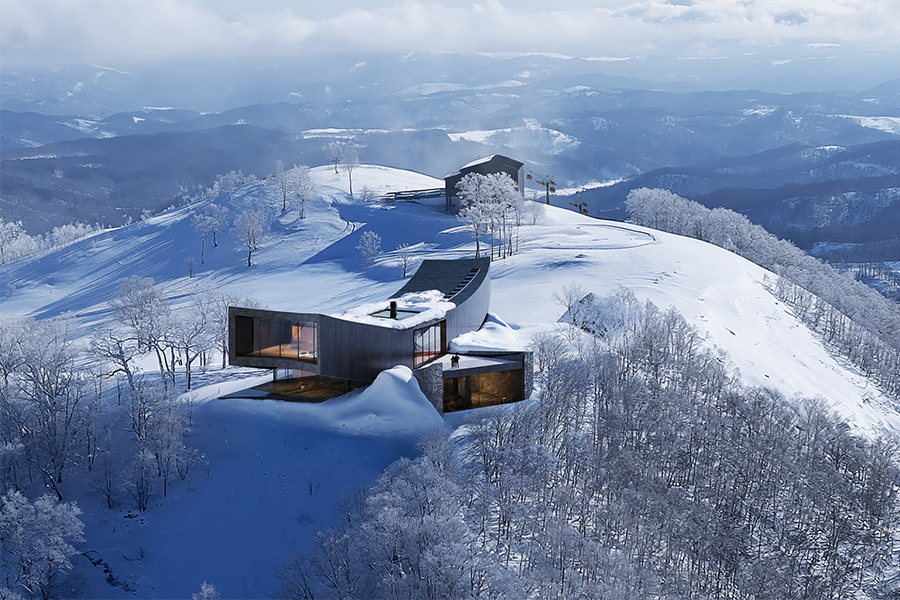When it comes to hotel growth, São Paulo remains one of South America’s shining stars. In August 2024 alone, São Paulo’s hotels achieved their highest-ever average daily rate (ADR) at $125, up 20 percent year over year, and the second-highest revenue per available room (RevPAR) at $85, a nearly 25 percent jump, according to CoStar. São Paulo was also the primary entry point for foreign visitors, welcoming 2.2 million in 2024, according to tourism data reported by The Rio Times.
This can credited to a variety of factors: São Paulo is an economic and business hub in South America, with millions of business travelers visiting annually; the country’s hotel sector is attractive to investors, highlighted by the recent $300 million acquisition of 18 AccorInvest hotels from Brazilian investment bank BTG Pactual; and there is a growing demand for luxury and lifestyle offerings to cater to a growing middle class.
Take the ambitious Rosewood São Paulo, which opened in 2022. The brand’s first in South America, the 160-room hotel was over a decade in the making, and thanks to the combined talents of design heavyweights French architect Jean Nouvel and designer Philippe Starck, it set a new standard for luxury in the city. Located within the Cidade Matarazzo complex, the hotel bursts with life, starting with the vertical garden tower that rises 328 feet into the sky doubling as a symbol of the city’s future.
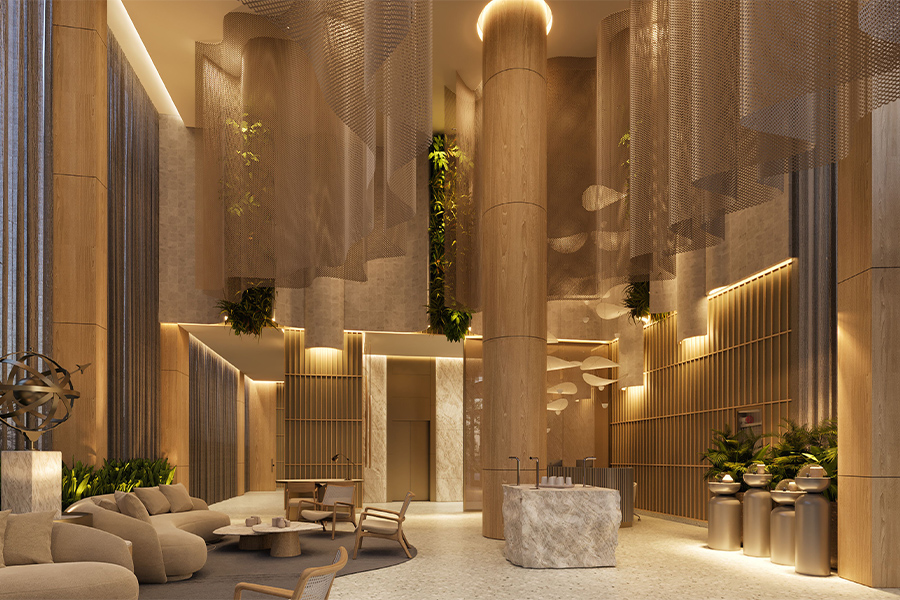
A rendering of the soon-to-open Westin São Paulo, where a dynamic installation cascades from the ceiling
A year later, the HKS-designed JW Marriott Hotel São Paulo joined the city’s skyline. Formerly a Four Seasons, the recently revived art-filled space celebrates local culture with pieces from Brazilian artists Roberto Burle Marx, Ramon Martins, Regina de Barros, and Rubens Ianelli.
Indeed, more big brands and investors are also planting their flags in the thriving metropolis. In September, Minor Hotels acquired four hotels in Brazil, including the Mofarrej São Paulo Hotel. Meanwhile, Nobu Hotel São Paulo—featuring a rooftop bar and pool as well as 161,500 square feet of residences—and the 187-room Westin, found in the city’s Itaim Bibi district, are slated to open in the next few years.
“São Paulo’s hospitality and design scene is dynamic and increasingly diverse,” says Brazilian architect Arthur Casas, founder of New York- and São Paulo-based Studio Arthur Casas, known for projects like the recently opened Pulso Hotel Faria Lima. “The high-end market has been expanding, with a growing selection of hotels, each with their own identity and unique approach.”
Here, we look at four properties that are driving São Paulo’s evolving hotel landscape.
Pulso Hotel Faria Lima

A suspended glass volume houses the spa, swimming pool, sauna, and gym at the Pulso Hotel Faria Lima
Part of Praça Henrique Monteiro, a mixed-use development comprising a residential tower, the 57-room Pulso Hotel Faria Lima is the vision of CEO Otávio Suriani and Studio Arthur Casas (a second location on the other side of Brigadeiro Faria Lima Avenue is expected to open in 2027).
“Pulso was conceived at a time when São Paulo was revising its urban policies, promoting higher density along key transit corridors and enhancing neighborhood centralities, such as Pinheiros,” Casas says. “This shift created new opportunities for projects that integrate with the city and introduce vibrant, attractive destinations to the real estate market. Aligned with this urban evolution, we envisioned the project holistically. Our goal was to design a development that engages with its surroundings, enriching the urban experience not only for residents and guests but also for those passing by.”
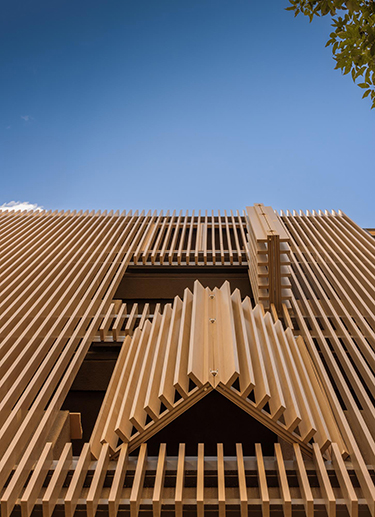
The Pulso Hotel Faria Lima is defined by its brise-soleil façade
Much of the allure of the property comes from the Ipê trees and other native flora that breathe life into the brise-soleil façade. Here, metal slats on the exterior were designed to “strike a balance between discretion and prominence,” says Casas. Additionally, by eliminating physical barriers, expanding sidewalks, and creating a green public space along the 187-foot-long stretch of Rua Henrique Monteiro, Casas says he was able to “blur the lines between public and private while encouraging interaction and a sense of place.”
Inside, the lobby’s restrained yet sophisticated design boasts modern furniture as well as Brazilian painter Nuno Ramos’ nearly 100-foot-long artwork and restaurateur Charlô Whateley’s two venues: the green lacquer- and wood-wrapped Bistrô Charlô and the casual Boulangerie Cha Cha, awash in earth tones.
W São Paulo
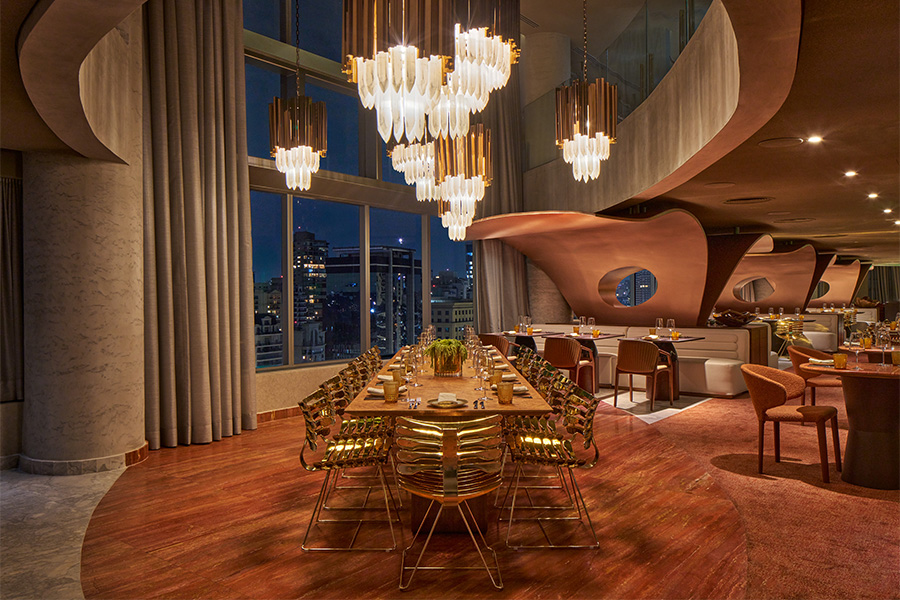
Sinuous curves add drama to Baio restaurant at the W São Paulo
São Paulo remains one of the most important cities for Marriott, and the W São Paulo’s opening this December reflects the brand’s ongoing success in the region. In addition to 179 guestrooms, the property is also home to 126 branded residences. “Brazilians are very loyal to the brands,” says Bojan Kumer, Marriott’s regional vice president of hotel development, Caribbean and Latin America. “Branded residences are definitely a trend we’re seeing [in Brazil]. People are looking for safety and convenience, but they’re also buying into the status [from a well-known brand].”
The city itself is also reflected in the W’s vibrant ethos. Both “pulse with energy, creativity, and innovation,” adds George Fleck, senior vice president and global brand leader for St. Regis, EDITION, and W Hotels. “We saw an opportunity to blend our bold detail-driven design and dynamic experiences with a metropolis celebrated for its cultural richness and urban edge.”
Locally based Aflalo/Gasperini Arquitetos, Portuguese designer Nini de Andrade Silva, and landscape architect Benedito Abbud incorporated many elements inspired by Brazilian modern architecture into the design. For instance, organic materials like local stone and wood juxtapose sinuous curves and a vivid color palette “that echoes the city’s artistic vibrancy,” says Fleck.
From F&B venues to wellness facilities, the hotel “ensures every guest feels connected to the cultural heartbeat of São Paulo,” he adds. “The design of it is a true dialogue between modern luxury and the city’s distinct cultural identity.”
Soho House São Paulo
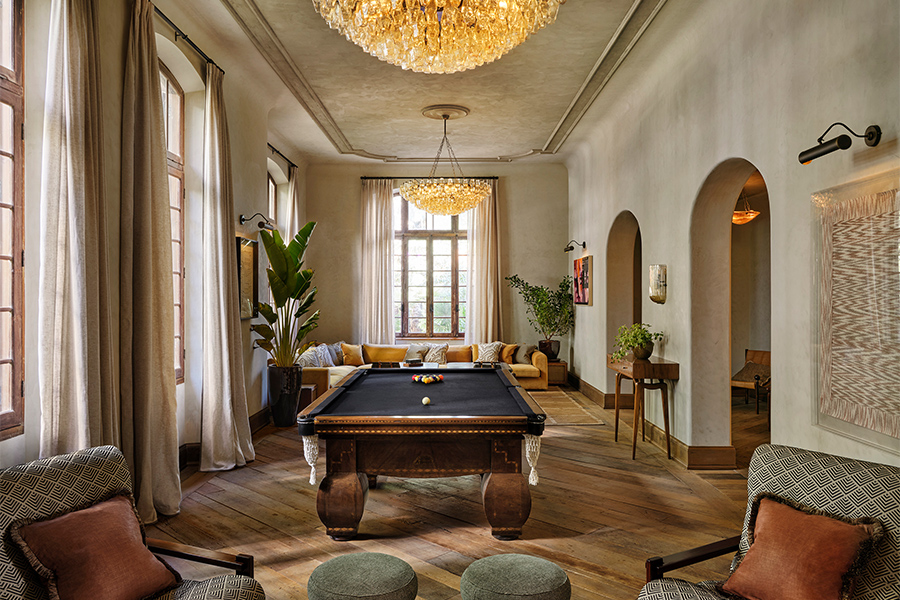
A navy blue-topped pool table is a highlight of the game room at Soho House São Paulo
When Soho House launched in Mexico City in September 2023, it was a major milestone for the brand’s global expansion in Latin America. With São Paulo as the second site in the region, it “allows Soho House the ability to spotlight the amazing creativity that Brazil holds, which is unique within Latin America itself,” says Alicia Gutierrez, membership director at Soho House São Paulo.
Attracting São Paulo’s creative community, the richly layered design from the in-house team tells a dynamic story. Set within the Cidade Matarazzo, it pays homage to Brazilian modernism and the city’s rich Portuguese heritage via elements like abstract patterns, a lush color palette, and local materials including imbuia, cumaru, and jequitiba woods.
Throughout the 32-room property, guests will find works from 60 Brazilian artists, as well as Brazilian-made pieces by local artisans. Large arched glass windows in the ground-floor club spaces add a touch of sophistication, complementing the navy-topped pool table in the game room and a central marble fireplace in the drawing room. The outdoor spaces are also a draw, with an inviting open-air terrace outfitted in rattan chairs and green and white parasols. A second phase of development, due to be completed this year, will include the addition of a fitness and spa, as well as a rooftop pool bar.
HQ Hotel São Paulo
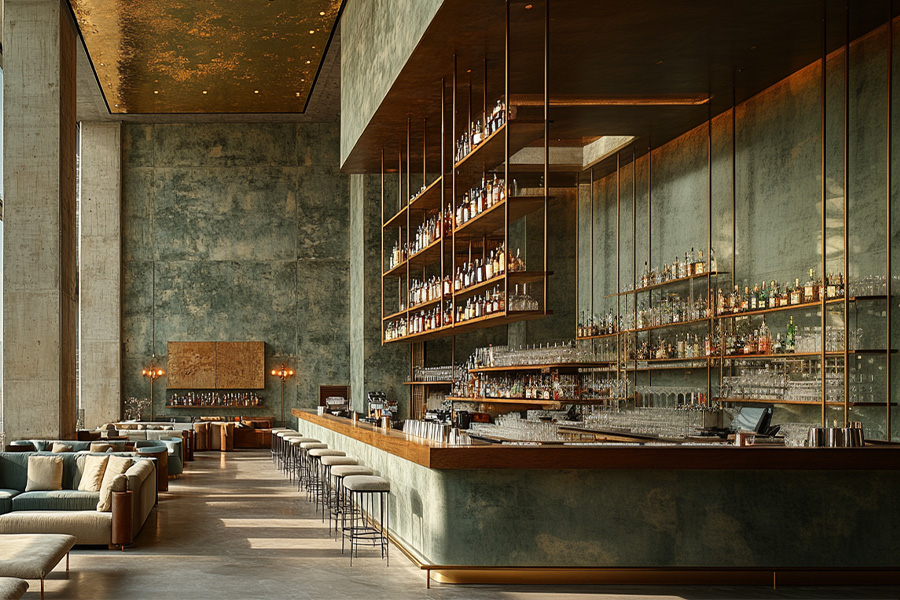
A rendering of the bar concept at the HQ Hotel São Paulo, coming online next year
When veteran hotelier and sbe founder Sam Nazarian launched HQ Hotels & Residences alongside entertainer Marc Anthony, he wanted to integrate wellness, F&B, and hospitality in a more seamless way than traditional hotels. The first property—the Hodges Bay Resort and Spa in Antigua—opened this year, with locations in Detroit, Switzerland, and São Paulo on the boards.
For the latter, “the opportunity presented itself to work with great developer [INC Urban Developer] in a country we’re excited to work in,” Nazarian says. “There’s a tremendous amount of opportunity [in South America], especially with the HQ brand.”

The lobby bar and mezzanine concept, shown in a rendering, at the HQ Hotel São Paulo
With authenticity and approachability at the forefront, the property’s design, handled by the development team, will be a throwback to what Nazarian does so well, integrating F&B and entertainment into an approachable and hospitality-driven environment. “Sbe is always the underlining denominator of expectation for our guests,” he says. “We have a good connection with the Brazilian lifestyle customer, and we’re hoping we pick up on the momentum we’ve had over the last decade.”
Slated for a 2026 arrival, the São Paulo property, a conversion of an existing building, will feature 100 rooms and 40 suites, and several familiar F&B outposts, including sbe’s S Bar, a new concept by chef Fabio Trabocchi, and chef Katsuya Uechi’s namesake restaurant. Perched on the roof, it will flaunt suspended gardens and panoramic city views.
“When you look at it, every country in Latin America has such unbelievable iconic design. There’s a lot of culture and history there. There’s a legacy, and we not only want to embrace it, but we also want to amplify that in our property,” Nazarian says.
This article originally appeared in HD’s February/March 2025 issue.


